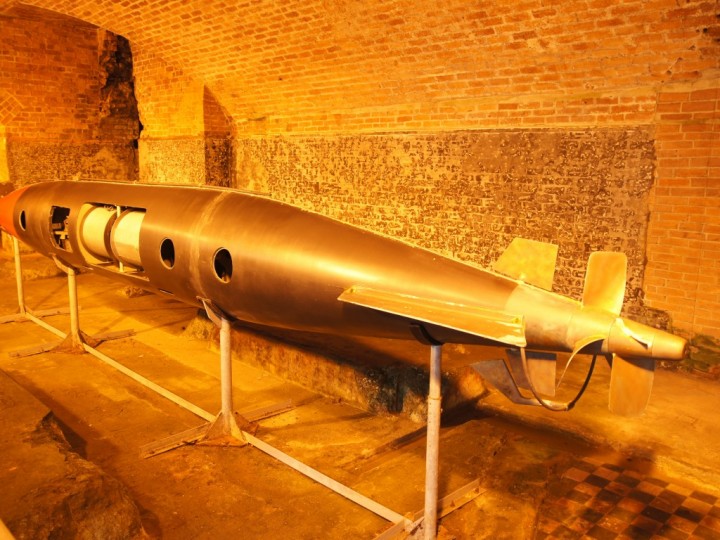0 The Brennan Torpedo
The only surviving Brennan Torpedo is displayed in the Royal Engineers Museum at Chatham in England. Behind its sleek exterior was an ingenious principle of propulsion and guidance.
Two drums of fine wire within the torpedo were connected to a shore based winding engine. When the wires were drawn off the drums, these rotated and drove the propellors which moved the torpedo through the water. By varying the relative speeds at which the wires were drawn off the drums, the torpedo could be steered to left or right.
The running depth of the torpedo was controlled by two planes at its bow. These were operated by a hydrostatic valve and a depth mechanism which was also driven by the rotating wire drums. The way in which the sealed depth mechanism functioned is still not fully understood; so secret was it at the time that the depth mechanisms were kept in a locked safe until they were installed shortly before the torpedoes were launched.
A retractable mast, with an electric lamp for night-time observation was mounted on the top of the torpedo.
This allowed the observer on shore to guide the torpedo towards its target.
The Brennan Torpedo at Chatham is 6.7 metres long; fully laden it weighed approximately 1,020 kg and would have had a warhead containing 100 kg of guncotton. Its effective range was approximately 2 km and it had a speed in excess of 20 knots (37 km per hour).







